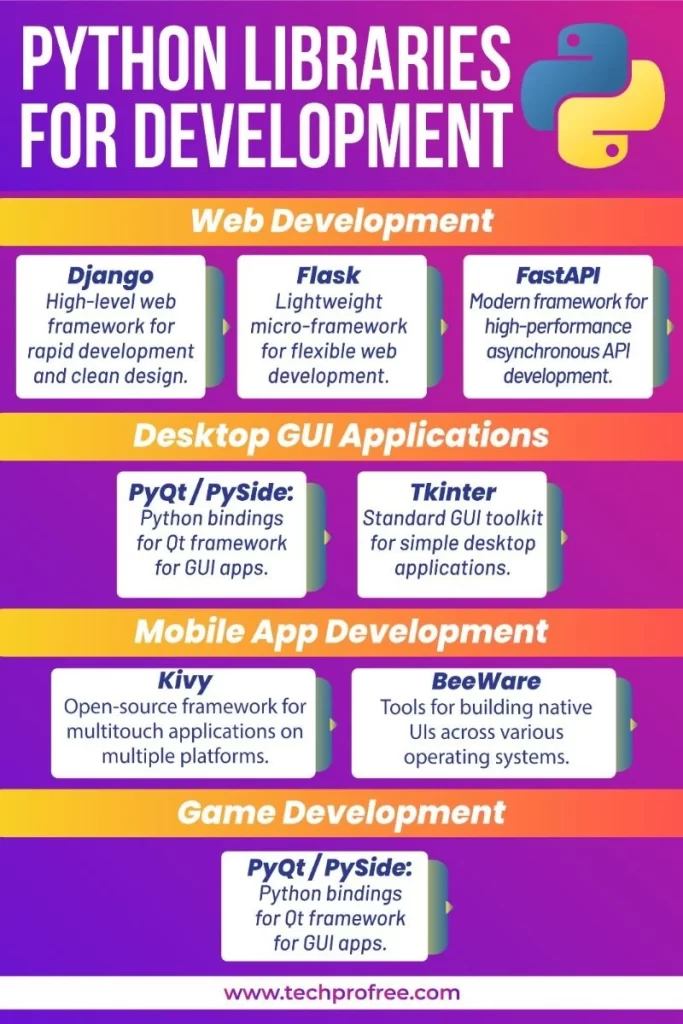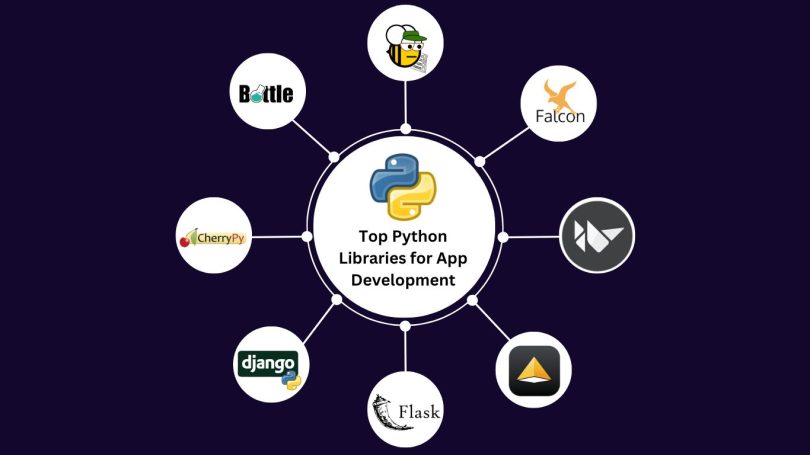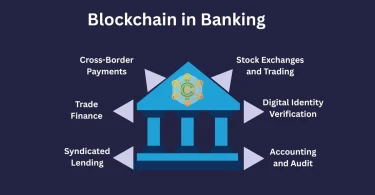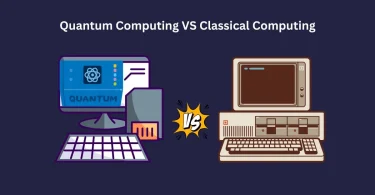Discover the best Python libraries for app development, like Django and Kivy, to easily build scalable and efficient apps for web and mobile. Python is a highly preferred language by the data science and development communities as it comes with a very wide collection of libraries and tools.
Importantly, the TIOBE Programming Community index of July 2020 puts Python in the third place among the top 20 programming languages that are used by engineers who are considered to be experts in their field.
The libraries / frameworks that are based on Python vastly contribute to the development of the web applications, henceforth requiring an informed decision among the most popular options. As a leading Python development organization, multiple projects use the frameworks to benefit from their capabilities in the best possible way.
In a survey carried out by AIM, 53.3% of respondents stated that they prefer Python because of its ability to develop customized analytics and grow their data science skills.
In this discourse, we will explain in detail which Python libraries / tools are appropriate for App development.
Understanding Python Libraries
Python libraries are considered as collections of pre-written code bits and functions that increase the possibilities of Python programming language. These libraries allow developers access to a vast collection of tools and modules that are not only multi-purpose but were constructed for different tasks thus making the development process a lot easier by saving developers from having to generate their own solutions from the scratch.
Python Libraries for App Development
BeeWare
BeeWare is a complete package of tools and libraries focused on developing and getting native software written in Python. This synthesized collection of libraries and tools jointly assists in making the native cross-platform GUI Python applications.
BeeWare ecosystem encompassed the following…
Toga
GUI interface is developed using OS-native, Python-native and cross-platform toolkit.
Briefcase
A packaging tool, which perfectly can be used for bundling Python projects into distributable artifacts; making the projects available to end-users.
Rubicon ObjC
A library which is built to work with Objective C libraries on iOS and macOS platforms and to do so in Python.
Rubicon Java
This includes a library that is designed in Python in order to connect easily with the Java libraries by using Python code.
Bottle
The Bottle turns out to be a proficient and simple micro-library/framework intended for minor web applications. The module is sent to the user’s machine as a single file. Bottle only has minimal dependencies that are provided by the Python Standard Library. One of the major features of the WSGI library is request dispatching with support for URL parameters, the integrated HTTP server and other adapters for various third-party WSGI/HTTP servers, including nginx.
CherryPy
It is a web framework/library within the object-oriented Python environment. It allows users to build web applications by applying the same principles they use when developing other object-oriented Python programs.
Its noteworthy features encompass…
- The coexistence of several HTTP servers at the same time.
- A solution that will provide a comprehensive configuration system both to the developers and deployers.
- A plug-in system that is ready to extend for further development.
- Integrated functionalities like caching, encoding, sessions, authentication and static content delivery, and so on.
- Inbuilt profiling, coverage analysis and testing capability.
- Support for Python 2.7+, 3.5+, PyPy, Jython and Android platforms.
Django
Django is the open-source, high-level web framework, which best features quick development and embraces a clean, practical design philosophy. It plays the role of a backend framework for web applications that use Python as the language used.
Django Features
- Focusing on strong security mechanisms for the elimination of the commonly known security vulnerabilities.
Falcon
It comes to light that Falcon stands out as a professional, high-class Python library built for the development of large-scale application backend and microservices. Falcon HTTP applications can be integrated with multiple WSGI or ASGI servers and support CPython version 3.5+ and PyPy version 3.5+.
Key features of Falcon
- A highly optimized, scalable codebase with the most advanced features.
- Path-based routing with URI templates and resource classes inspired by the REST paradigm.
- Simple access to get request and response headers and bodies.
- Embrace unit testing effectiveness through WSGI helper.
- The execution of DRY (Don’t Repeat Yourself) principles in request processing through the middleware components and hooking functions.

Flask
It is an extensively adopted Python web application library/framework that is built on the lightweight philosophy and sticks to the WSGI web application framework standards. The Flask framework still recommends some external libraries, but it is not necessary to use them. Thus empowering developers with the possibility to be more creative and scale the design of their applications accordingly.
Kivy
A Python library that promotes the open-source development of apps with the latest user interface technologies that include multi-touch applications. GPU acceleration, cross-platform compatibility and a license that is business-friendly are the main reasons why it is the first choice for many engineers.
On Python platforms, Kivy uses programming libraries like GStreamer, PIL and Cairo, among others.
Pyramid
It can be said that Flask becomes an efficient and quick Python library/framework that is suitable for both Python 2 and 3. Stressing on website development most simply, Pyramid. Also provides the tools that most websites need, such as URL mapping, security measures and static asset serving.
Concerning that, Pyramid urges to implement the packaging tools, virtual environments, logging and other associated practices.
Comparison of Top Python Libraries for App Development
| Library | Category | Unique Features | Ideal Use Cases |
| Django | Web Development | Robust ORM, built-in admin interface, high security | Complex, high-traffic web apps; e-commerce, CMS |
| Flask | Web Development | Lightweight, modular, supports easy prototyping | Small web apps, RESTful APIs, prototyping |
| Kivy | Mobile Development | Cross-platform, GPU-accelerated, multitouch support | Mobile and desktop applications with rich UIs |
| BeeWare | GUI Applications | Native cross-platform GUI toolkit, tools for mobile | Desktop applications with native look on all platforms |
| Bottle | Microservices | Single-file micro framework, minimal dependencies | Simple, lightweight web apps, microservices |
| CherryPy | Microservices | Object-oriented, supports multiple HTTP servers | Scalable, object-oriented web applications |
| Pyramid | Web Development | Flexible, supports Python 2 and 3, minimal setup | Flexible web applications, larger projects |
| Falcon | Microservices | Optimized for performance, path-based routing | High-performance APIs and microservices |
| NumPy | Data Science | Array handling, mathematical operations, data manipulation | Scientific computing, data analysis, numerical tasks |
| Matplotlib | Data Visualization | Extensive plotting capabilities, supports various chart types | Data visualization for analysis and presentation |
| Pandas | Data Science | Data manipulation and analysis, excels with large datasets | Large-scale data manipulation, machine learning workflows |
| Toga | GUI Applications | GUI toolkit for native applications across multiple OS | Native cross-platform desktop applications with a Python backend |
Python Libraries for App Development Pros Cons
| Library | Pros | Cons |
| Django | High scalability, comprehensive tools, strong community | Higher learning curve, larger codebase |
| Flask | Minimalistic, easy to learn, large ecosystem of extensions | Limited built-in features, needs extensions for advanced features |
| Kivy | Good cross-platform support, supports touch events | Can be complex for simpler apps, limited support for iOS |
| BeeWare | Native GUI support, suitable for multiple platforms | Requires additional setup for mobile deployments |
| Bottle | Easy to deploy, minimal dependencies | Limited functionality, not suitable for complex apps |
| CherryPy | Highly configurable, supports multiple HTTP servers | Smaller community, fewer extensions than Django or Flask |
| Pyramid | Versatile, works with both Python 2 & 3 | Less user-friendly for beginners, less built-in functionality |
| Falcon | Fast, lightweight, high-performance for large-scale apps | Limited support for complex web app structures |
| NumPy | Efficient memory handling, widely used in scientific fields | Not a general-purpose library, limited to scientific tasks |
| Matplotlib | Highly customizable, integrates well with data tools | Requires understanding of matplotlib objects, complex for beginners |
| Pandas | Excellent for data manipulation, versatile in analysis | Memory-intensive for large datasets, learning curve |
| Toga | Simple, allows Python code to create GUI on all OS | Limited flexibility in UI design, mainly supports Python-based backends |
Final Discussion
The Python app development world presents a wide range of libraries and frameworks, which aim to cover particular needs and the different sizes of the projects. Whether it is the highly sophisticated Django for complex web applications or the fast prototyping Flask, this article discussed some of the most useful tools that you can utilize. Bear in mind that it is the quality that matters, rather than the quantity of the things that you choose. Through the comprehension of each library’s strong points, you can easily make smart decisions and exploit the flexibility of Python to create great apps.




Leave a Comment